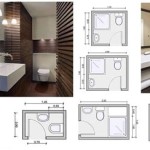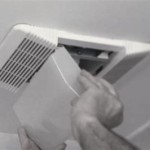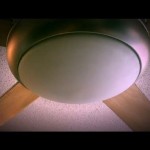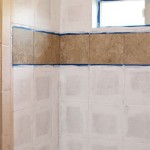Why Are Gnats In The Bathroom?
Gnats appearing in the bathroom can be a common and frustrating problem for homeowners. These tiny flies, often mistaken for fruit flies or drain flies, can quickly multiply and become a nuisance. Understanding the reasons for their presence is the first step in effectively managing and eliminating them. Several factors contribute to gnats finding their way into the bathroom, focusing on the availability of food sources, moisture, and accessible entry points.
Gnats, in general, are attracted to decaying organic matter, moisture, and sugary substances. Their small size allows them to exploit even minor imperfections in plumbing and structural integrity to gain access. Once inside, the bathroom environment can provide everything they need for breeding and survival, leading to a persistent infestation. Identifying the specific attractants present in a bathroom, coupled with understanding their life cycle, enables a targeted approach to gnat control.
Food Sources: Decaying Organic Matter
One of the primary reasons gnats are drawn to bathrooms is the presence of decaying organic matter. This can take various forms, including buildup in drains, damp areas under sinks, or even residue on bathroom surfaces. Gnats, particularly drain flies, thrive on the bacteria and microorganisms that flourish in these environments.
Drains are a significant source of food for gnats. Hair, soap scum, and other organic waste accumulate in the drainpipes, creating a breeding ground for these pests. The moist, dark environment within the drain further promotes the decomposition process, releasing odors that attract gnats from considerable distances. Drain flies, specifically, are known for laying their eggs within the slimy film that coats drain walls.
The area under sinks, especially if there are slow leaks or condensation, can also provide a suitable habitat. Dampness encourages the growth of mold and mildew, which attract gnats. Leaking pipes or poorly sealed plumbing fixtures create ideal conditions for moisture accumulation. Any spilled liquids, such as shampoo or soap, that are not cleaned up promptly can also contribute to the problem.
Other potential food sources include overflowing or poorly maintained garbage bins in the bathroom. Decaying tissues, cotton swabs, and other waste materials can attract gnats. Similarly, houseplants in the bathroom can become a breeding ground if the soil is consistently damp and contains decaying organic matter. Overwatering plants creates a favorable environment for fungus gnats, another common bathroom pest.
Addressing these food sources requires a thorough cleaning of the bathroom. Regularly flushing drains with hot water and baking soda, or using enzymatic drain cleaners, can help break down organic matter. Repairing any plumbing leaks and ensuring proper ventilation to reduce moisture buildup are also essential steps. Emptying and cleaning bathroom garbage bins frequently and avoiding overwatering houseplants can further minimize potential food sources.
Moisture: a Breeding Ground for Gnats
Moisture is another crucial factor that attracts gnats to bathrooms. These insects require moist environments to breed and lay their eggs. The humidity levels typically found in bathrooms, coupled with potential leaks and condensation, create ideal conditions for gnat infestations.
Leaking pipes or faucets are a common source of moisture in bathrooms. Even small, slow leaks can provide enough water for gnats to thrive. These leaks often go unnoticed until a significant problem develops, such as water damage or mold growth. Regularly inspecting plumbing fixtures for leaks and promptly repairing any issues can prevent moisture accumulation and reduce gnat attraction.
Condensation, particularly around showers, toilets, and windows, also contributes to the problem. Warm, moist air from showers and baths condenses on cooler surfaces, creating damp areas that gnats find appealing. Proper ventilation, such as using exhaust fans during and after showering, can help reduce condensation and lower humidity levels. Opening windows, when weather permits, can also improve airflow and discourage gnat breeding.
Standing water in sinks or bathtubs can also attract gnats. Leaving water in these fixtures for extended periods provides a readily available source of moisture for the insects. Wiping down surfaces after use and ensuring that water drains properly can help eliminate this attraction.
Even seemingly minor sources of moisture, such as damp towels or washcloths left on the floor, can contribute to gnat problems. These items provide a breeding ground for bacteria and mold, which attract gnats. Hanging towels and washcloths to dry and laundering them regularly can help prevent moisture buildup.
Addressing moisture issues requires a comprehensive approach. Repairing leaks, improving ventilation, and eliminating standing water are all important steps. Using a dehumidifier in the bathroom can also help reduce humidity levels and make the environment less attractive to gnats.
Entry Points: How Gnats Get In
Understanding how gnats enter the bathroom is just as important as addressing the food sources and moisture that attract them. Gnats are small enough to exploit even minor gaps and cracks in building structures, allowing them to gain access to the interior of the home.
Cracks and crevices in walls and floors are common entry points for gnats. These tiny insects can squeeze through even the smallest openings, gaining access to the bathroom. Inspecting walls and floors for cracks and sealing them with caulk or sealant can help prevent gnat entry. Pay particular attention to areas around plumbing fixtures, such as pipes and drains, where gaps are often present.
Gaps around windows and doors are another potential entry point. Weather stripping that is damaged or deteriorated can create openings for gnats to enter. Replacing or repairing weather stripping can effectively seal these gaps. Ensuring that window and door screens are in good condition and free of holes can also prevent gnats from entering the bathroom.
Plumbing penetrations, where pipes enter the bathroom from outside, are often overlooked as potential entry points. Gaps around the pipes can provide a pathway for gnats to access the interior of the home. Sealing these gaps with expanding foam or caulk can prevent gnat entry. It's crucial to ensure there are no openings around utility lines entering the house too.
Drains themselves can also serve as entry points for gnats, particularly if the drain traps are dry. Drain traps are designed to hold water, creating a barrier that prevents sewer gases and pests from entering the home. If a drain is not used regularly, the water in the trap can evaporate, allowing gnats to enter through the drainpipe. Periodically running water down unused drains can help keep the traps filled and prevent gnat entry.
Air vents and exhaust fans can also provide a pathway for gnats to enter the bathroom. The vents may not be properly screened, allowing the pests to come inside. Installing or repairing screens on air vents and exhaust fans can prevent gnat entry. It is also important to ensure that these vents are properly sealed around the edges to prevent gaps.
Effectively managing entry points requires a thorough inspection of the bathroom and surrounding areas. Sealing cracks, repairing gaps, and maintaining drain traps are all important steps in preventing gnats from entering the home. Combined with addressing food sources and moisture, these measures can help eliminate gnat infestations and keep the bathroom pest-free.
How To Get Rid Of Gnats Drain Flies Fruit And Fungus
Jab Plumbing Solutions Blog Blocked Drain Plumbers
How To Get Rid Of Gnats In A Bathroom Quora

Gnat In Bathroom Leia Bugguide Net

Fruit Flies In The Bathroom Get Rid Of Them Michael S Plumbing Orlando

The Simple Trick To Stop Pesky Gnats From Taking Over Your Drains

Fungus Gnats Arnold Zwicky S Blog

Fungus Gnats Doityourself Com Community Forums

Gnats In Basement Doityourself Com Community Forums

How To Rid Of Drain Flies Forbes Home
Related Posts







